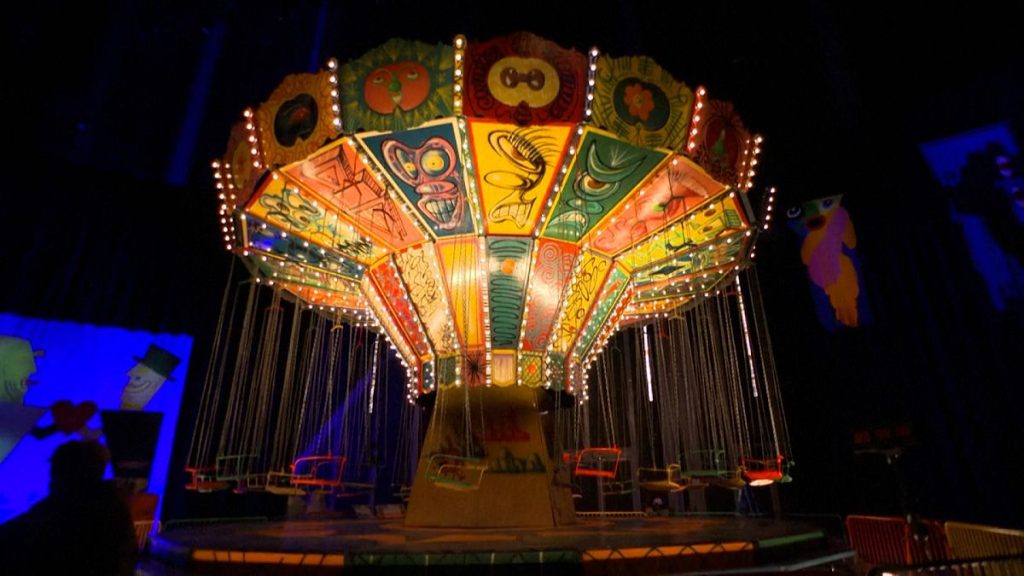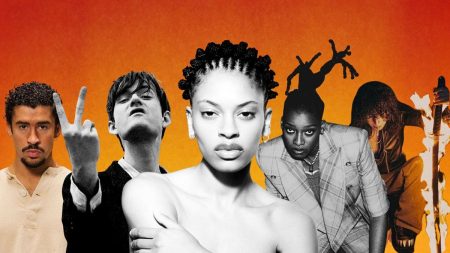Luna Luna, a vibrant art carnival from 1987, has made a triumphant return to New York City after being hidden away for decades. The carnival showcased groundbreaking installations and artworks by renowned artists such as Keith Haring and Jean-Michel Basquiat, making it a significant cultural event in the late ’80s. Originally envisioned as an immersive experience that combined art, performance, and community engagement, Luna Luna aimed to bridge the gap between high art and popular culture. Its revival is not only a testament to the enduring relevance of these iconic works but also highlights the importance of maintaining historical artistic narratives.
The resurrection of Luna Luna serves as a celebration of the creative spirit of the 1980s, an era marked by experimentation and vibrant artistic dialogue. Haring’s playful and socially conscious works, along with Basquiat’s raw and expressive style, created a unique atmosphere that resonated with a diverse audience. The carnival originally took place in a colorful tent filled with interactive installations, allowing visitors to engage directly with the art. This participatory approach is something that contemporary art institutions continue to explore, as they seek new ways to engage audiences in meaningful ways.
Curators working on the revival of Luna Luna faced numerous challenges, including locating and restoring the original artworks and installations. Much of the carnival’s material had been stored away, and some pieces had deteriorated over time. The restoration process involved not only physical repairs but also extensive research into the original context and significance of the works. This journey has sparked renewed interest in the artists involved and has encouraged discussions about the evolution of art since the carnival took place. It also raises questions about the preservation of cultural heritage and the responsibility of institutions to maintain and celebrate past artistic movements.
The return of Luna Luna has also reignited conversations about the social and political issues that Haring and Basquiat addressed in their work. During the 1980s, both artists engaged with themes such as race, identity, and the AIDS crisis, which remain deeply relevant today. The carnival provides a platform for reflecting on these ongoing issues and encourages a dialogue about art as a medium for social change. By revisiting the works of these influential artists, audiences are prompted to consider the impact of art on society and the importance of using creative expression to address pressing contemporary challenges.
In addition to showcasing the original artworks, the revival of Luna Luna includes new commissions and collaborations with contemporary artists, bridging the gap between past and present. This approach not only honors the legacy of Haring and Basquiat but also demonstrates the continued relevance of their ideas in today’s artistic landscape. By incorporating modern perspectives, the carnival emphasizes the evolution of art and the ways in which it can respond to current societal issues. This blend of nostalgia and innovation invites a fresh interpretation of the original works while fostering a sense of continuity within the art community.
As Luna Luna continues to unfold in New York City, it stands as a beacon of creativity and inspiration, reminding us of the powerful potential of art to connect individuals and communities. The revival serves as a powerful reminder of the importance of remembering and honoring our artistic past while embracing new voices and ideas. By celebrating the works of Keith Haring and Jean-Michel Basquiat within the context of today’s art scene, Luna Luna not only reinvigorates interest in these artists but also encourages a dialogue about the role of art in shaping our cultural landscape. Through this extraordinary resurrection, the spirit of the original carnival lives on, inspiring a new generation of artists and audiences alike.














